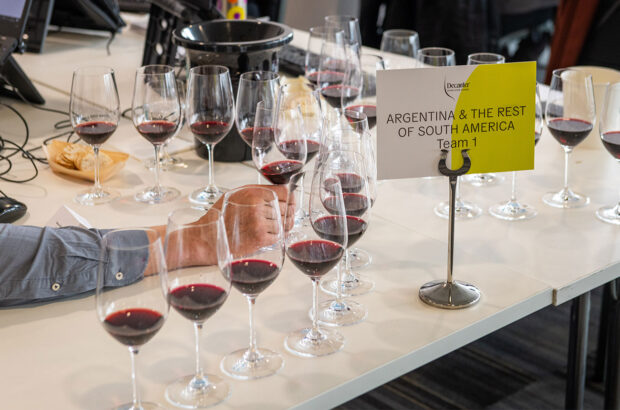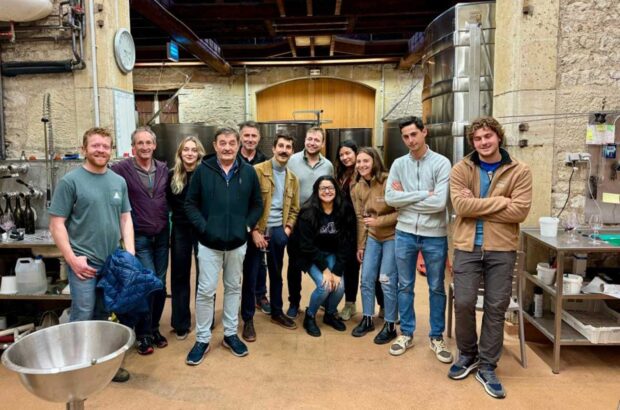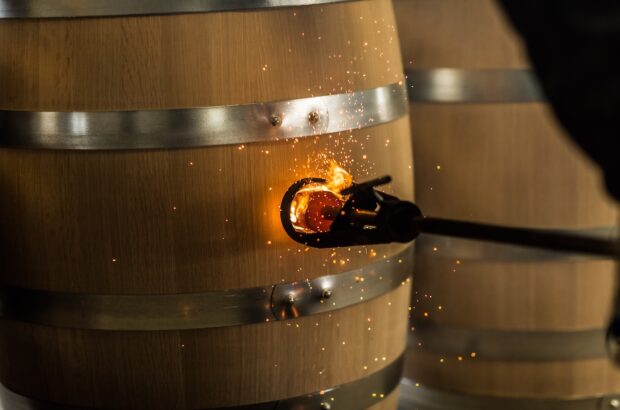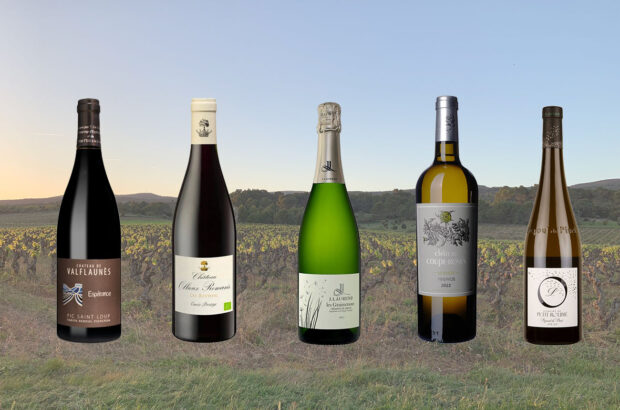The wine glasses I wanted were hiding in a dusty, half-open cabinet in the basement, and had no price. The shop assistant superintending the ground-floor bazaar was foxed; he phoned the owner. Fifteen euros each, came the answer; I settled. Squat, with an olive-green beehive stem, and the small bowl elegantly engraved with bunches of grapes, vine leaves and curling tendrils. You fill them almost full, of course. Silly glasses. Gloriously silly.
Don’t I know better? Shouldn’t I be saving for Riedel Superleggeros, or Zalto Denk’Arts? Even Bestheim, Alsace’s largest cooperative, is wagging its website finger at me: ‘Alsace wines are often served in glasses with green stems. This kind of glass is not, however, ideal. It is too small to oxygenate the wine and the green-coloured stem interferes with the wine’s true colour.’ Yes, I know, and yes, I won’t be organising any professional wine tastings with these clumsy, dinky-chunky little glasses. But I still love them. We still use them. To drink with.
Genuine antique wine glasses might be better. I don’t have any, but I once had a friend who did. Goblets, balusters and coupes through to faceted stemware and the astonishing air-twist glasses, in which a bubble of air is spun by glass-blowers’ magic into spiral patterns the length of the stem: there’s enough choice, craft and creation to set dozens of cabinets shimmering. The cabinet, though, says it all: antique value discourages use. I saw one of my friend’s balusters broken by a guest I’d invited, and I’m still recovering from the trauma. Breaking a €15 beehive is a shame, but not a trauma.
What’s the attraction? The escape from earnestness is one. Serious wine glasses are intimidating: they tell you there’s work to do, and you damn well better be up to it. They’re a prelude to silence and endeavour, culminating in the humiliation of your (or my) pathetic attempts at blind identification, which is never the point of wine. With a squat goblet or plain baluster filled close to the brim, you can forget all that and just settle down to candlelit enjoyment, friendship, savour and story-telling: the point of wine.
Ample sensual enjoyment is still on offer. Sipping from small glasses emphasises retronasal aromas, those that rise from your tongue as the wine warms. These may be a truer test of a wine’s aromatic soul than swirling it round a goldfish bowl on a stem, which can tear a wine to pieces and emphasise aspects of its character (oak, acidity, alcohol, potential faults) best left unemphasised in appreciative tasting. A sip, after all, is still a sip, regardless of vessel. These glasses remind you that you’re being invaded by a joy-bringing, emotionally restorative ferment rather than analysing a particular grower’s efforts on key sites in 2016 or 2019. Nothing stops you discussing; you just discuss it in a more appreciative, less analytical frame of mind.
Glasses of this sort are either historical in themselves (if antique) or modelled on historical styles, so drinking from them puts you in touch with all the drinkers of the past, whether consciously or not. Add a tablecloth and candles, and the act of drinking from a goblet, beehive or baluster feels grand, courtly, cultured and universal, even if you are sitting in the same old living room you’ve spent the evening in on a thousand other occasions.
It’s important, you see, to be the kind of drinker you want to be. The wine world is over-full of pressures to conform, to match up, to play peer-group games and to limp on gamely after the Joneses or the Johnsons or the Robinsons. A silly glass begins to set you free.
In my glass this month
One of the most emotionally compelling wines in a week of touring in Alsace was Meyer-Fonné’s Gewurztraminer Grand Cru Furstentum 2019. OK, it was drunk from sensible professional glasses, but this light golden wine would be no less delicious in an antique or cultural glass as well. That intimation of belly fur and rose petals would be there in each sip, lifting from the tongue; its density and fire would beckon alluringly from behind the frosted engravings.













